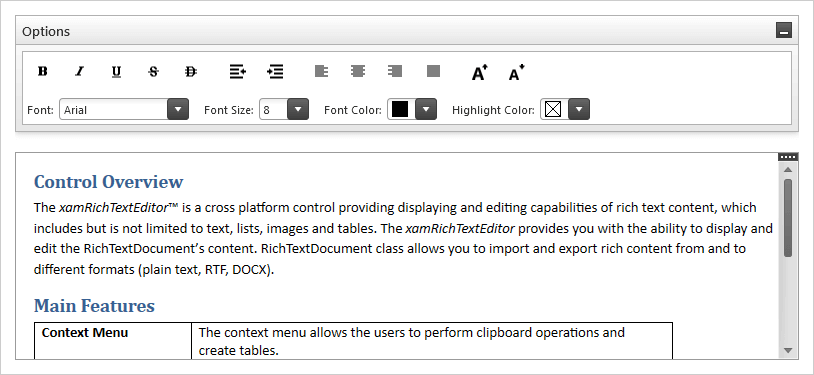

The alternative approach is to encode the data before it is sent to the web server for processing, then use a CDS plugin to decode the data so that it is saved as proper HTML. You might be asking yourself why if there is already an easy solve for this, why would I bother providing another approach? The answer is because there is a reason why Request Validation exists, and if you can avoid turning it off for your entire site (which is what the Site Setting does), it’s something worth considering. However, a bit of searching led me to find a reference to it from December 2017, so clearly it’s been around for a while. I figured it was a new feature, so I didn’t feel too bad about not knowing about it. Turned out it was recently – early February 2020. When I discovered the documentation, the first thing I did was look at the history in GitHub to see when that documentation was added. As you’d expect, with the setting created, Request Validation will not take place and your rich text will be saved to the CDS database. However, in putting it together, I discovered there is a way to disable Request Validation on Power Apps Portals, and it’s as easy as creating a Site Setting named DisableValidationWebTemplate with a value of true. My intention with this blog post was to describe the solution I’ll present below. Once Microsoft moved the product to Software-as-a-Service, we no longer had that control. However, back then since we controlled the ASP.NET application, we were able to turn this feature off when necessary. I’ve been aware of this issue since the Adxstudio days. This is what will happen if you simply apply a Rich Text Editor to a field on an Entity Form. Since Power Apps Portals in an ASP.NET application where this default feature has not been turned off, if you try to submit raw HTML in one of the fields on your Entity Forms, the application will throw an error.
#Microsoft rich text editor download download
It’s designed to prevent script injection attacks. But, if your browser does not support this new API, it uses the - downloads - API instead to save files to disk in the default download folder (asks for downloads permission when opening the interface). Request Validation is an ASP.NET security feature that prevents the application from processing unencoded HTML submitted to the server. Unfortunately, with Power Apps Portals, there is a gotcha: Request Validation. These editors generally make things pretty simple – point them at a and they pretty much do the rest. There are a lot of available What You See Is What You Get (WYSIWYG) Editors out there – in the past I’ve used both TinyMCE and CKEditor for various different types of projects. You’d think that adding a rich text editor to a Power Apps Portal Entity Form or Entity List shouldn’t be too hard.

Accessibility guidelines Screen reader support Y – The distance between the top edge of a control and the top edge of the parent container (or screen, if no parent container). X – The distance between the left edge of a control and the left edge of its parent container (or screen, if no parent container). Width – The distance between a control's left and right edges.

Visible – Whether a control is visible or hidden. TabIndex – Keyboard navigation order in relation to other controls. Height – The distance between a control's top and bottom edges.
#Microsoft rich text editor download windows
Power Apps for Windows doesn't support this property. This functionality will provide spell checking only in the default language of the browser. Should describe the purpose of the attachments.ĭisplayMode – Whether the control allows adding and deleting files ( Edit), only displays data ( View), or is disabled ( Disabled).ĮnableSpellCheck – Whether the browser spell checker is enabled. Additional propertiesĪccessibleLabel – Label for screen readers. HtmlText – Output property for the resulting rich text in HTML format. Key propertiesĭefault – Input property for the initial text value shown in editor. To use the control inside a form, select the "Edit multi-line text" card, and customize it by inserting the RTE control. This means that if rich text was created outside of Power Apps, it may not look the same as in the product where it was created. All script, style, object, and other potentially compromising tags will be removed by the editor. Control's input and output format is HTML.Ĭontrol allows copied rich text (i.e from web browser or Word) to be pasted into the control.Ĭontrol's intended use is to format text and doesn't guarantee to preserve the integrity of the input HTML. The Rich text editor control provides the app user a WYSIWYG editing area for formatting text. Allows end users to format text inside a WYSIWYG editing area.


 0 kommentar(er)
0 kommentar(er)
